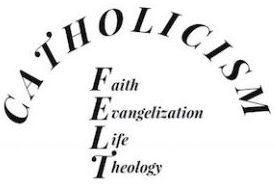I remember a time when I desperately wanted to share a humorous story with a good friend of mine about something that had just transpired at work. A few days later, I had the opportunity to tell him what occurred and attempted as much as possible to hold back my laughter as the story progressed. Finally, when I arrived at the punch line and concluded the story, I bursted out laughing. As I laughed for about a minute, I glanced at my friend and noticed that he was not. He looked at me strangely and said, “I don’t get it. Why is this so funny to you?” I responded, “You really don’t get it? Don’t you have a sense of humor?” And he replied, “I do, but I do not know why this story is so funny to you. I guess I just had to be there to appreciate it.”
Blessed Are Those Who Believe
It is difficult for someone to treasure an experience that happened if he or she was not there to personally observe and undergo it. For this reason, Thomas the Apostle did not believe the other apostles when they said, “We have seen the Lord.” (Jn 20:25) He doubted. Similarly, many of us have doubted God’s presence. Thomas’ response, “Unless I see the mark of the nails in his hands and put my finger into the nail marks and put my hand into his side, I will not believe,” is analogous to a popular saying that many people use today, particularly in the United States: “I have to see it to believe it.” Sadly, there are many Catholics and non-Catholics alike that still say this today regarding the presence of God. Many still are reluctant to believe God is present because they cannot see Him. Some continue to say that they have to see God to believe in God.
Thomas the Apostle distrusted the apostles’ testimony. However, Jesus visited them a week later when Thomas was with them. Upon seeing Jesus and hearing Him say, “Put your finger here [Thomas] and see my hands, and bring your hand and put it into my side, and do not be unbelieving, but believe,” (Jn 20:27) Thomas answered and said to Him, “My Lord and my God!” Jesus then said, “Have you come to believe because you have seen me? Blessed are those who have not seen and have believed.” (Jn 20:29) These last words of Jesus ring especially true when we speak about the Church’s teaching on the Holy Eucharist.
The Real Presence of Jesus Christ in the Holy Eucharist
The Catholic Church teaches that Jesus Christ, the only Son of God and Mary, is risen and alive and is present in the Most Blessed Sacrament—in other words, in the Eucharistic species. He is the Bread of Life. The Gospel according to Luke proclaims the institution of this sacrament by our Lord Jesus Christ.

On Holy Thursday, He instituted the priestly ministry and this sacrament of sacraments, and entrusted its celebration to the apostles and to their successors, the bishops—and the presbyters under them—saying, “Do this in memory of Me.” (Lc 22:19). With this commandment, Jesus directs them to say and do day by day what He articulated and carried out on the night before He died.
The disciples remembered that our blessed Lord specifically stated, “My flesh is true food, and my blood is true drink. Whoever eats my flesh and drinks my blood remains in me and I in him.” (Jn 6:55-56) Indeed, Christ Jesus was speaking literally and not symbolically. Therefore, when a Catholic priest says during Mass, “this is my body… this is my blood,” he says this in Jesus’ name, and the substances of bread and wine become the true body and blood of Christ by the power of Jesus’ words and of the Holy Spirit. This change is called transubstantiation, the miracle of God’s self-giving that occurs whenever Mass is celebrated.
“My Lord and My God” – Christ’s Power to Feed Us
When Christ stated that the bread that He gives is His flesh, the Jewish people quarreled among themselves, saying, “How can this man give us [his] flesh to eat?” (Jn 6:52) This inquiry reveals the skepticism of some and the confusion of others and continues to be raised today by people that doubt the presence of Christ in the Eucharist. However, we must recall that Jesus Christ is the Son of the Living God. He was sent by the Father with whom He is one God; came down from heaven, and by the power of the Holy Spirit was incarnate of the Virgin Mary and became man. If Christ, the living God—who revealed His power by feeding more than five thousand with five barley loaves and two fish—was able to become man, how can He be unable to become food for our eternal life?
Jesus Christ certainly can and does offer us His body and blood so that we may be one with Him. He gives us His very self because of the immensity of His love. Therefore, let us strive to not only be physically present in the greatest blessing that is the Holy Mass, but also to be mentally and spiritually present to fully treasure this experience. Let us also implore the Bread of Life to increase our belief in His Eucharistic presence, visit Him in the tabernacle more frequently, and say to Him with faith and love, “My Lord and my God,” when our eyes behold the Sacred Host. He will certainly answer this prayer, rejoice in our visits, and give us true life.
(Note: This post was originally published on June 4, 2016.)

1 thought on “Believing in the Bread of Life”